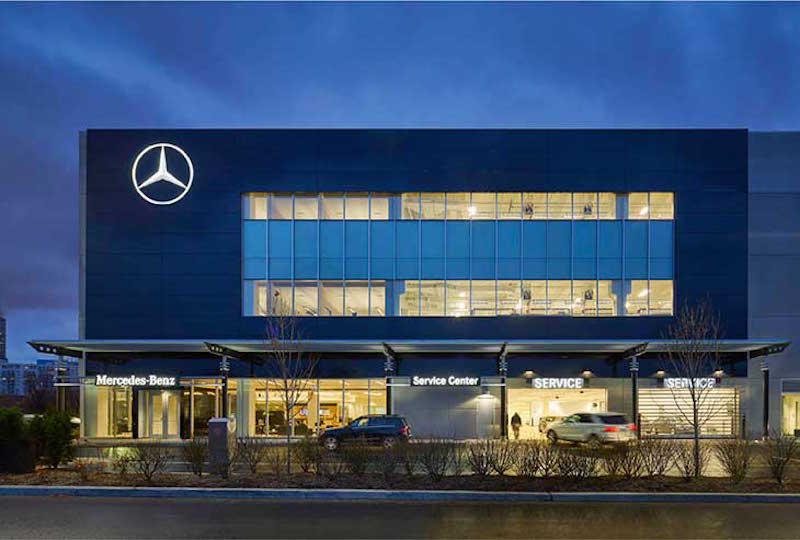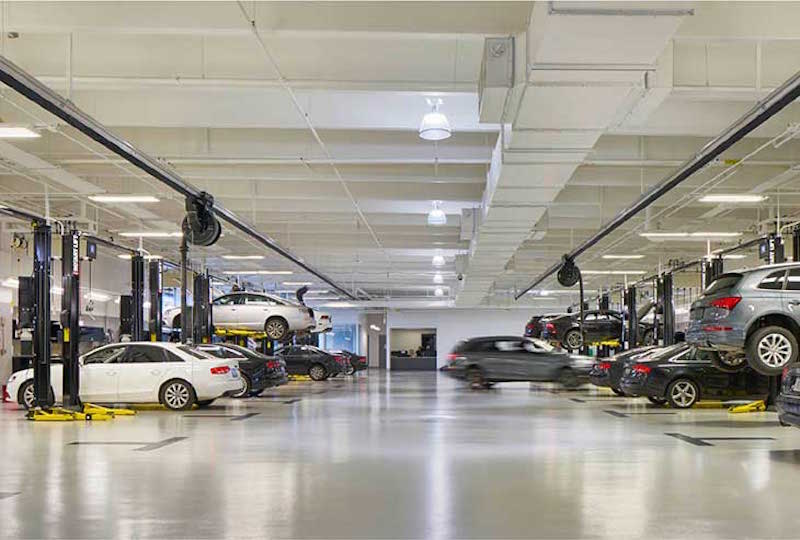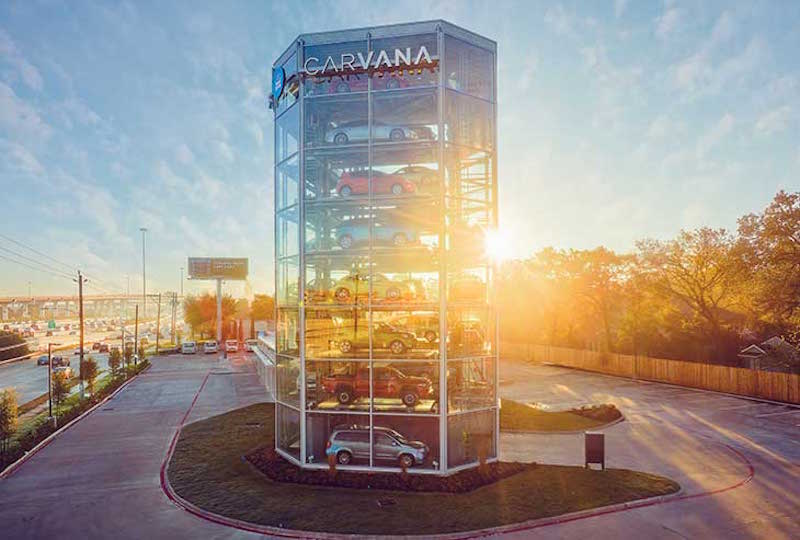Billed as “the world's first fully-automated, coin-operated car vending machine,” Carvana vending machines are starting to “protrude” from high visibility properties around many urban areas lately. Beyond visual interest, this belies a subtle shift we see in the automotive retail typology moving forward. It’s much less about advertising as in the past, and more an all-out assault on the conventional car buying model, which traditional dealerships are being forced to address.
Significant changes are underway as automotive manufacturers and retailers try to anticipate consumer demands in changes in their business models. Traditional Sales, Leasing and Service are now complicated by subscription services like cars2go by Mercedes-Benz, incremental ownership models and the impending autonomous driving car. Outside influences of driver services such as Uber and Lyft also are challenging the notion of car ownership as a basic need. At the core of all these new business models are efforts to bring more convenience to the buyer, making the process virtual while requiring less capital investment and operational cost for businesses attached to the car.
 Image © Carvana.
Image © Carvana.
Demand for automotive retail and brand presence has not changed, but the shift back to the urban core after a long period in suburbs, as highways icons and low cost city perimeters, is following the income demographic and tax base. Fundamental problems of this move are highly restrictive zoning regulations, environmental impact, traffic mitigation and infrastructure needs to support the modern dealership model demands. Vertical dealership models are extremely expensive and require years of potential rezoning or conditional use permits and council approvals combined with elevated construction costs employing car elevators and ramps for upper floors to replace acreage used to hold inventory. Most difficult is the scarcity of land and proformas, which justify a site in a city as the highest and best against return on investment.
 Image © Gensler.
Image © Gensler.
A Carvana type model seeks to change the process to a fully automated online experience, which reduces operational cost to sell, perform the finance process and service the vehicle, while also decreasing capital expenses of building and developing large buildings. The doorstep delivery model means these vertical dealerships simply house the cars that have already been selected online, om itting the conventional sales and financing process all together. The equation simply becomes an algorithm of how many and what type of cars are stored in which locations based on aggregating search patterns and general income factors. This new model means the inventory is distributed to the nearest & the most likely buyers depending on age, buying patterns and income.
Without fixed operations (car repair and service), the new model allows for more integration into existing zoning in congested areas where traditional dealerships still require administrative constraints. It also removes the associated fixed cost for staff, expensive financing of inventory of parts and space for vehicles. As there is no significant traffic generation, the environmental impact fees are assumed to be generally small. The online interface and support, along with door to door delivery, is a unique experience, and it will be interesting to see how the main manufacturers adopt similar strategies within the strict franchise agreements that rule primary market areas that are designed to restrict heavy overlap of competing dealership owners per brand.
 Image © Christopher Barrett.
Image © Christopher Barrett.
While the Carvana model is currently only targeting the sales of pre-owned vehicles, manufacturers are looking with interest to expand their footprint in new models. The primary question for automotive retailers should be, how do we remain relevant in the process? As designers of compelling branded retail spaces are concerned, the shift seems most likely to move towards the model of brand centers, such as Europe and Asia, which mirror more closely the Tesla showroom model, or most abstracted still, the recently opened Cadillac House in Manhattan. It will be critical how the manufacturers maintain their brand equity without relying on a compelling retail space, or human sales associates as brand messengers.
More from Author
Gensler | Oct 21, 2024
3 surprises impacting the return to the office
This blog series exploring Gensler's Workplace Survey shows the top three surprises uncovered in the return to the office.
Gensler | Jun 26, 2024
5 ways ESG can influence design and create opportunities
Gensler sustainability leaders Stacey Olson, Anthony Brower, and Audrey Handelman share five ways they're rethinking designing for ESG, using a science-based approach that can impact the ESG value chain.
Gensler | May 20, 2024
10 spaces that are no longer optional to create a great workplace
Amenities are no longer optional. The new role of the office is not only a place to get work done, but to provide a mix of work experiences for employees.
Gensler | Apr 15, 2024
3 ways the most innovative companies work differently
Gensler’s pre-pandemic workplace research reinforced that great workplace design drives creativity and innovation. Using six performance indicators, we're able to view workers’ perceptions of the quality of innovation, creativity, and leadership in an employee’s organization.
Gensler | Mar 13, 2024
Trends to watch shaping the future of ESG
Gensler’s Climate Action & Sustainability Services Leaders Anthony Brower, Juliette Morgan, and Kirsten Ritchie discuss trends shaping the future of environmental, social, and governance (ESG).
Gensler | Feb 15, 2024
5 things developers should know about mass timber
Gensler's Erik Barth, architect and regional design resilience leader, shares considerations for developers when looking at mass timber solutions.
Gensler | Jan 15, 2024
How to keep airports functional during construction
Gensler's aviation experts share new ideas about how to make the airport construction process better moving forward.
Gensler | Dec 18, 2023
The impacts of affordability, remote work, and personal safety on urban life
Data from Gensler's City Pulse Survey shows that although people are satisfied with their city's experience, it may not be enough.
Gensler | Nov 16, 2023
How inclusive design supports resilience and climate preparedness
Gail Napell, AIA, LEED AP BD+C, shares five tips and examples of inclusive design across a variety of building sectors.
Gensler | Oct 16, 2023
The impact of office-to-residential conversion on downtown areas
Gensler's Duanne Render looks at the incentives that could bring more office-to-residential conversions to life.
















